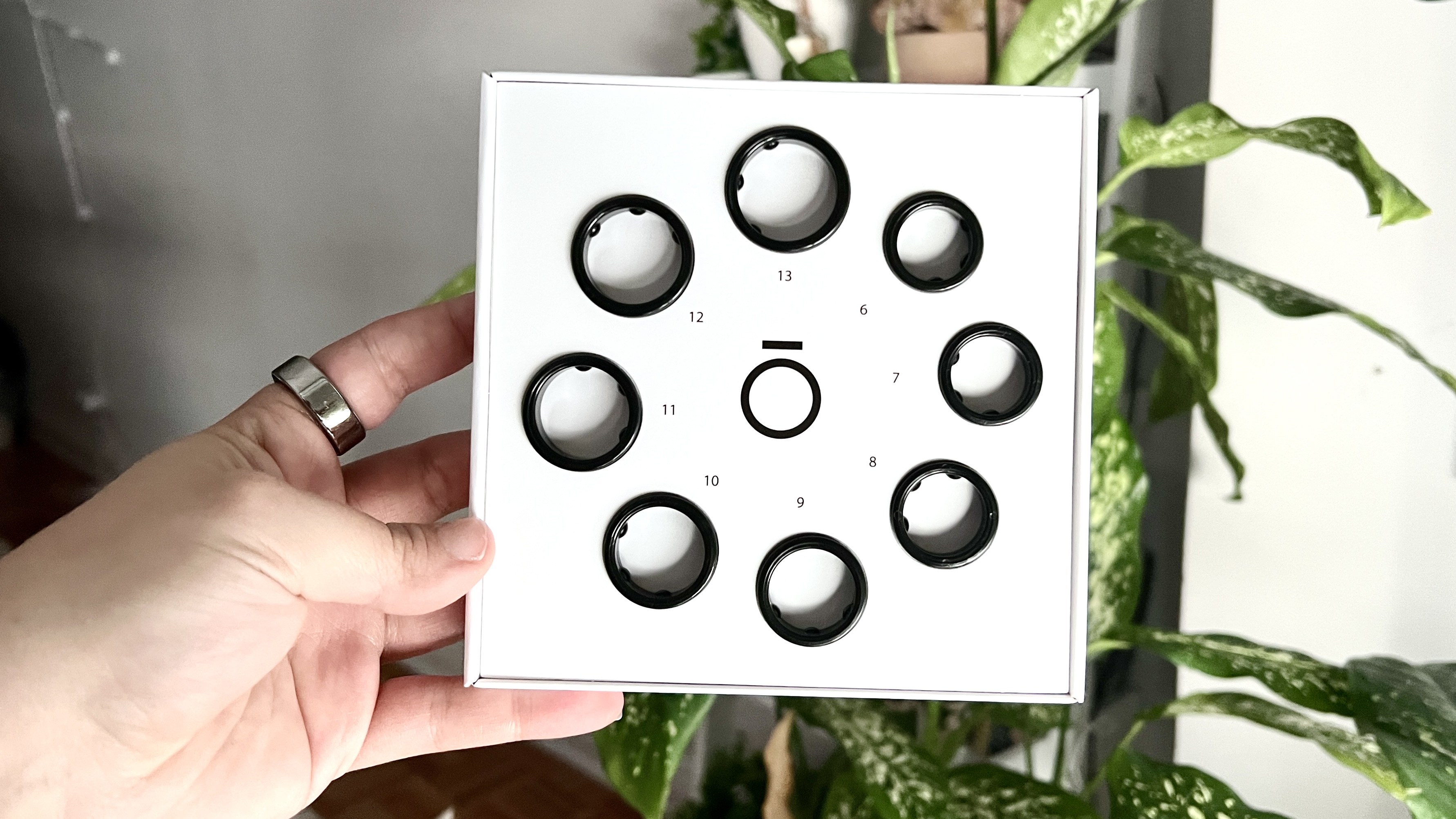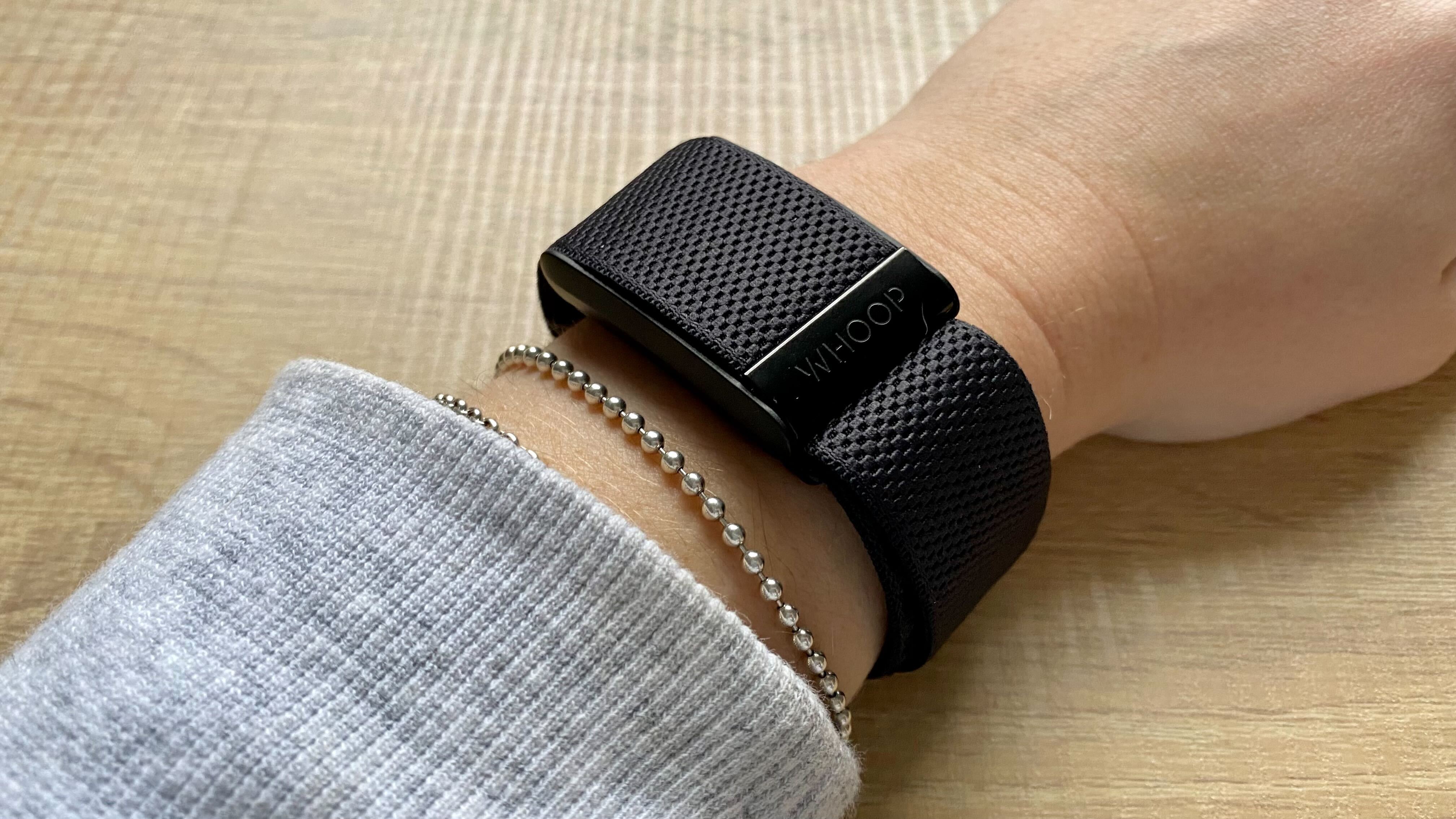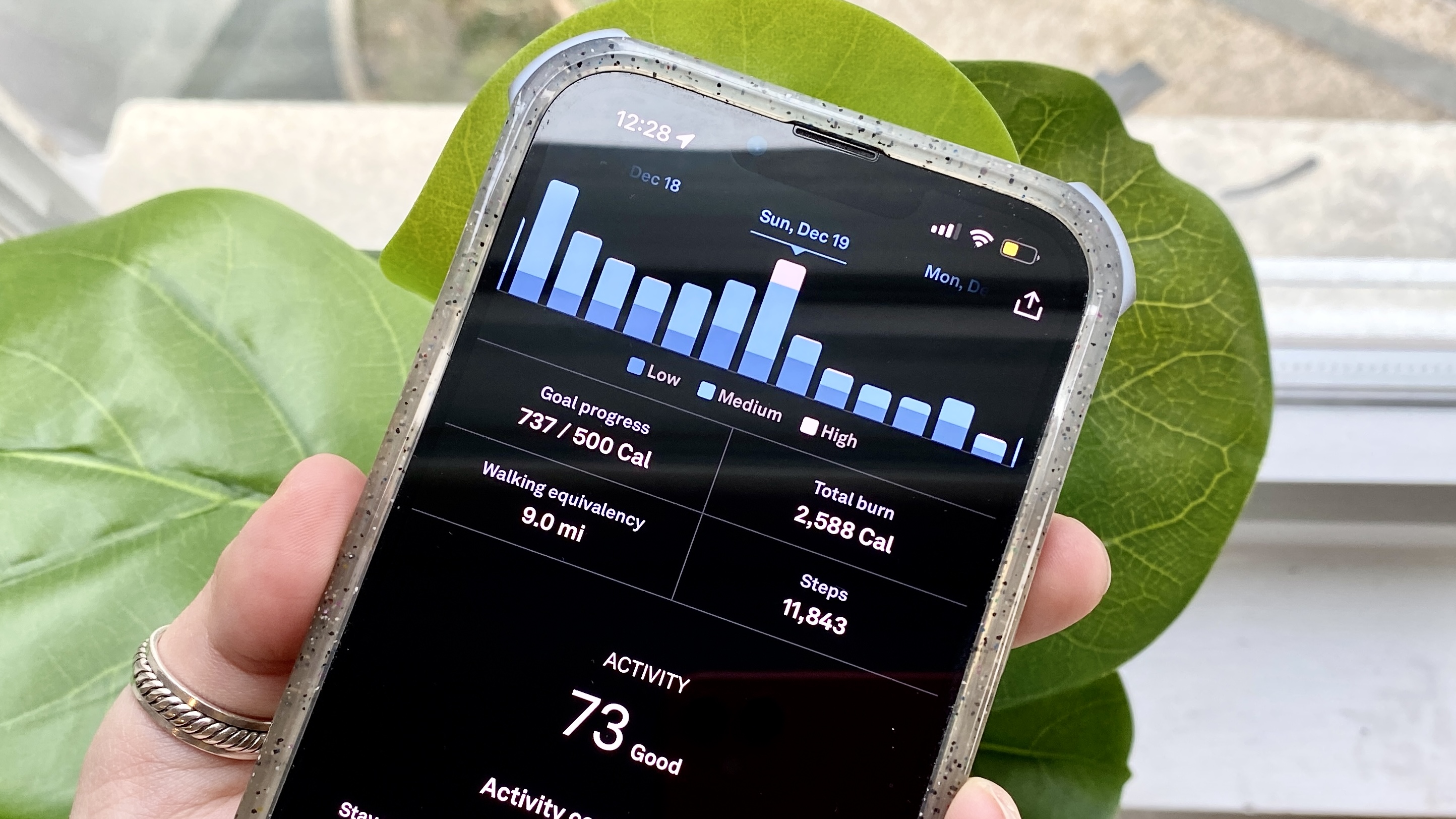Oura Ring 3 vs Whoop 4.0: Which is the top fitness tracker for you?

Fitness trackers come in all shapes and sizes, and two of the most popular fitness trackers on the market will blend in with your jewellery. If you want to keep an eye on your sleep, fertility, heart rate, and active calorie burn without looking like you’re wearing a sports watch, you might have your eye on the Whoop 4.0 or the Oura Ring.
Both discrete trackers aren’t ideal for checking your metrics on the run, or during a workout, but they’ll do just about everything else. If you’re struggling to choose between the two trackers, we’ve been wearing both to help you decide which is right for you, and your lifestyle.
Oura announced a sucessor to the Oura Ring Gen 3 in October 2024. In our Oura Ring 4 review, we found that it is still one of our favorite fitness trackers, but the ring itself is a modest upgrade on the Gen 3. Though since the Gen 3 ring has been discontinued, the Oura Ring 4 in its all circular design is now your only choice. However, in most other aspects, the comparison to the Whoop tracker is pretty much unchanged.
Both the Whoop and the Oura ring require you to pay for subscriptions, so read on to find out more in our Oura ring 3 vs Whoop 4.0 face-off.
Oura ring 3 vs Whoop 4.0: Price and availability
Both of these trackers require you to pay a monthly subscription to view your data, so neither is a particularly affordable option (if you are on a budget, check out the best cheap fitness trackers).
The Oura ring starts at $349 for the black and silver ring, $449 for the matte black, $499 for the gold, and $549 for the rose gold. The ring comes with a free one-month membership, and after that, it costs $6.99 per month.
The Whoop 4.0 itself is free, but you have to pay a subscription of $30/£30 a month, a 12-month membership at $24/£24 a month (plus £288/$288 to start), and an 18-month option at $18/£18.
Winner: Whoop 4.0 — Neither tracker comes cheap, but after a year, the Whoop 4.0 is still the cheaper option.
Get instant access to breaking news, the hottest reviews, great deals and helpful tips.
Oura ring 3 vs Whoop 4.0: Design and display
If you’re looking for a fitness tracker that’ll give you feedback on the move, neither of these watches will tick that box. Neither the Oura ring 3 or Whoop 4.0 have a screen, so you won’t be able to get live feedback on your running pace.
The Oura ring is a smart ring, designed to be worn on your index finger on your non-dominant hand (to avoid getting the ring scratched). Before ordering your ring, Oura will send you a sizing kit so you can get the right size — you should wear the plastic dummy ring for at least 24 hours, keeping it on overnight to ensure you get the right size. The ring shouldn’t rotate on your finger as you go about your day.

The ring has green and red LED sensors — the green monitor your heart rate throughout the day, and the red track your blood oxygen. The ring can also track your heart rate variability (measuring stress), respiratory rate and body temperature.
In the third generation Horizon Oura ring, there are five different finishes to choose from — silver, black, stealth, gold, and rose gold.

The Whoop 4.0 on the other hand is a tracker on a material loop, which can be worn around the wrist, forearm, or bicep, or in compatible gym kit (Whoop body). There are a large number of color options to choose from when it comes to the strap and device itself.
The Whoop 4.0 sensor contains five LEDs (three green, one red, and one infrared), four photodiodes, and advanced algorithms for more accurate heart rate tracking. Similar to Oura, it also tracks heart rate variability, blood oxygen and skin temperature.

With both the Oura and the Whoop band, you’ll need to download the compatible apps and sync your device throughout the day to keep an eye on your data.
Winner: Oura — beauty truly is in the eye of the beholder, but the Oura ring really does look great, and is cool enough to look like actual jewelry rather than fitness tech.
Oura ring 3 vs Whoop 4.0: Comfort and usability
In addition to giving you all the data you could possibly need, your fitness tracker needs to be comfortable enough to wear 24/7. Wearing the Oura Ring for a month-plus felt unobtrusive. Since it’s waterproof and safe for contact with sweat, soaps and elements your hands might face on the day-to-day, we didn’t need to take it off when we worked out, washed our hands or cooked dinner. It even slipped into a load of laundry by accident and survived with ease (we wouldn’t recommend recreating this particular durability test though).
The Whoop is also relatively easy to wear all day — compared to older bands, the Whoop 4.0 is 30% smaller. We measured the device in the band as 1.5 inches long, 1 inch wide, and about 0.5 inches deep. One stand-out feature of the Whoop 4.0 is the charger port. The band prides itself on 24/7 tracking, so the charger can be slipped over the tracker while it’s in the band on your wrist, for on-the-go charging. The charger does make the tracker a little bulkier and heavier on the wrist, but it’s not all that bad if you’re just sitting behind a desk at work, or on the commute.

The charger on the 4.0 is also waterproof, meaning you could wear your Whoop and its charger in the shower or while swimming. That said, we soon realized that the fabric wristband didn’t dry all that fast, so took it off when showering and swimming, because who wants a wet wrist for hours?
Winner: Oura — both of these fitness trackers are super-comfortable to live with, but for us, the Oura takes the edge as it doesn’t get in the way if you’re already wearing a watch, plus if you’ve got sensitive skin, the fabric band is annoying when wet.
Oura ring 3 vs Whoop 4.0: Battery life
Compared to the likes of the Apple Watch Series 8, both of these trackers have excellent battery life. The Oura ring has up to seven days of battery life, and will be fully charged in 20-80 minutes using the ring’s charging port.
Whoop says the 4.0 band has a battery life of five days, and we found this to ring true during our testing. It charged completely in about two hours. The fact you can slot the band’s charger over the tracker and wear it on the move is a truly excellent innovation, and one we wish brands like Apple would copy.

Winner: Oura — despite the fact you can keep the Whoop on your wrist as you charge it, you’ll get an extra couple of days of charge with the Oura ring, and it’ll finish charging faster.
Oura ring 3 vs Whoop 4.0: Data and insights
As mentioned above, you’ll need to download the compatible apps to get the most out of these fitness trackers. As well as measuring your heart rate and sleep, both of the trackers will record data from your workouts, but one does this slightly better than the other.
From a workout perspective, the Whoop 4.0 came out on top — it was much better at recognizing workouts and recording them. Whoop 4.0 works off two metrics — Strain and Recovery. They are the first things you’ll see when you log into your app. Your Recovery score is based on how well you’ve slept.
Your Strain score is based on how much you’ve worked out that day. Strain is based on your heart rate, so if you’ve gone on a gentle three-hour bike ride, but kept your heart rate pretty low, your strain score will be lower than if you’ve gone on a 30-minute run. Your strain starts at 0.0 each morning, and the max strain score Whoop is said to give is 21.

The Oura ring gauges workout intensity based on your heart rate and minutes of elevated activity, as well as by using imported workout data from Apple Health or Google Fit. During our testing, we paired the ring with our Health app, which syncs with the Apple Watch 8, so all of our Apple Watch-tracked workouts appeared in the activity tab of the Oura app. If you don’t have one of the best smartwatches or another fitness tracker, the Oura app lets you retroactively log exercise and can even guess a completed workout.
Oura Ring activity is scored based on how few minutes you’re inactive, how often you’re working out, the amount of recovery time you’re allowing your body and whether you’ve needed push alerts to stand up every hour. We usually scored in the 80s, though it took us a while to understand that our daily calorie goals adjust based on our readiness score — Oura Ring’s true hallmark.
The readiness score determines when your body is ready for physical activity, or when it’s time to take it easy. Any score 85 or over indicates a good split of movement and rest, though an optimal score is achieved when your resting heart rate, heart rate variability, body temperature, sleep and activity are balanced.

From a sleep perspective, the Oura ring is one of the top trackers on the market. Tom's Guide Editor Kate Kozuch wrote, “At a glance in the Oura app, I can review my total time laying down, hours asleep, resting heart rate overnight and sleep efficiency percent. I’m also given a daily sleep score based on these factors, plus hours of REM sleep, hours of REM sleep, hours of deep sleep, sleep latency (how long it takes you to fall asleep) and sleep timing.”
Compared to the sleep data on the Apple Watch Series 8, the Oura ring was far superior — during testing, the tracker could accurately say when we’d stirred throughout the night. It also displays the data in a simple, color-coded timeline to show you your time spent awake or in REM, deep or light sleep.
Winner: This one depends on what you’re looking for. The Whoop is better than the Oura ring at recognizing and tracking activities, but the Oura is superior to the Whoop when it comes to tracking sleep. We also appreciated that the Oura ring gives you easy-to-understand advice, but more on that below.
Oura ring 3 vs Whoop 4.0: The apps
Sure, the trackers collect a bunch of information, but how easy it is to digest this information is purely down to their corresponding apps. Both the Whoop and Oura apps work with iOS and Android and are free to download, yet we found during testing the Oura app was far easier to use, and presented our data in a way that was much easier to understand.
The homepage of the Oura app gives you everything you need to know at a glance — your activity data and active calorie burn, your daily heart rate, period prediction, activities, heart rate variability, readiness and sleep scores, as wekk as a suggested bedtime that evening, and an overview of your activity and resting heart rate data over the last eight weeks. If you want to drill down further, you can click into any of the metrics, and the app gives you helpful, actionable advice.
As a period tracker, the Oura app measures your body temperature to predict your time of ovulation. It’s also compatible with the period tracking app Natural Cycles.
The Whoop app, on the other hand, has a lot of data, but it can seem overwhelming, and it’s not often all that clear what you’re looking at. Compatibility-wise, the Whoop can sync with Nike+ Run Club, MyFitnessPal, Strava, ASICS Runkeeper, Google Fit, and Apple Health. As well as Natural Cycles, the Oura is compatible with Strava, Training Peaks, Equinox+, and Apple Health.
Winner: Oura — the Oura app is a joy to use, and makes it easy to find, and more importantly understand, your data.
Oura ring 3 vs Whoop 4.0: Verdict
After living with both the Oura ring and the Whoop for a few months, the best fitness tracker really depends on what you’re hoping to get from it. The Oura ring is discrete enough to wear to the office, is fantastic for sleep and recovery data, and has an easy to understand app, that’ll help you make positive changes to your life.
The Whoop 4.0 on the other hand is better at fitness-focused data recording. It can also be worn on multiple parts of the your body, and has a compatible clothing line, allowing you to physically wear it if you’d rather.
For both, you’ll need to invest in one of the best running watches, best Garmin watches or best Fitbits if you want on-the-go feedback. They don’t come cheap, but if you’re looking to better understand your health, these are two of the greatest fitness trackers we’ve tested.

Jane McGuire is Tom's Guide's Fitness editor, which means she looks after everything fitness related - from running gear to yoga mats. An avid runner, Jane has tested and reviewed fitness products for the past five years, so knows what to look for when finding a good running watch or a pair of shorts with pockets big enough for your smartphone. When she's not pounding the pavements, you'll find Jane striding round the Surrey Hills, taking far too many photos of her puppy.
